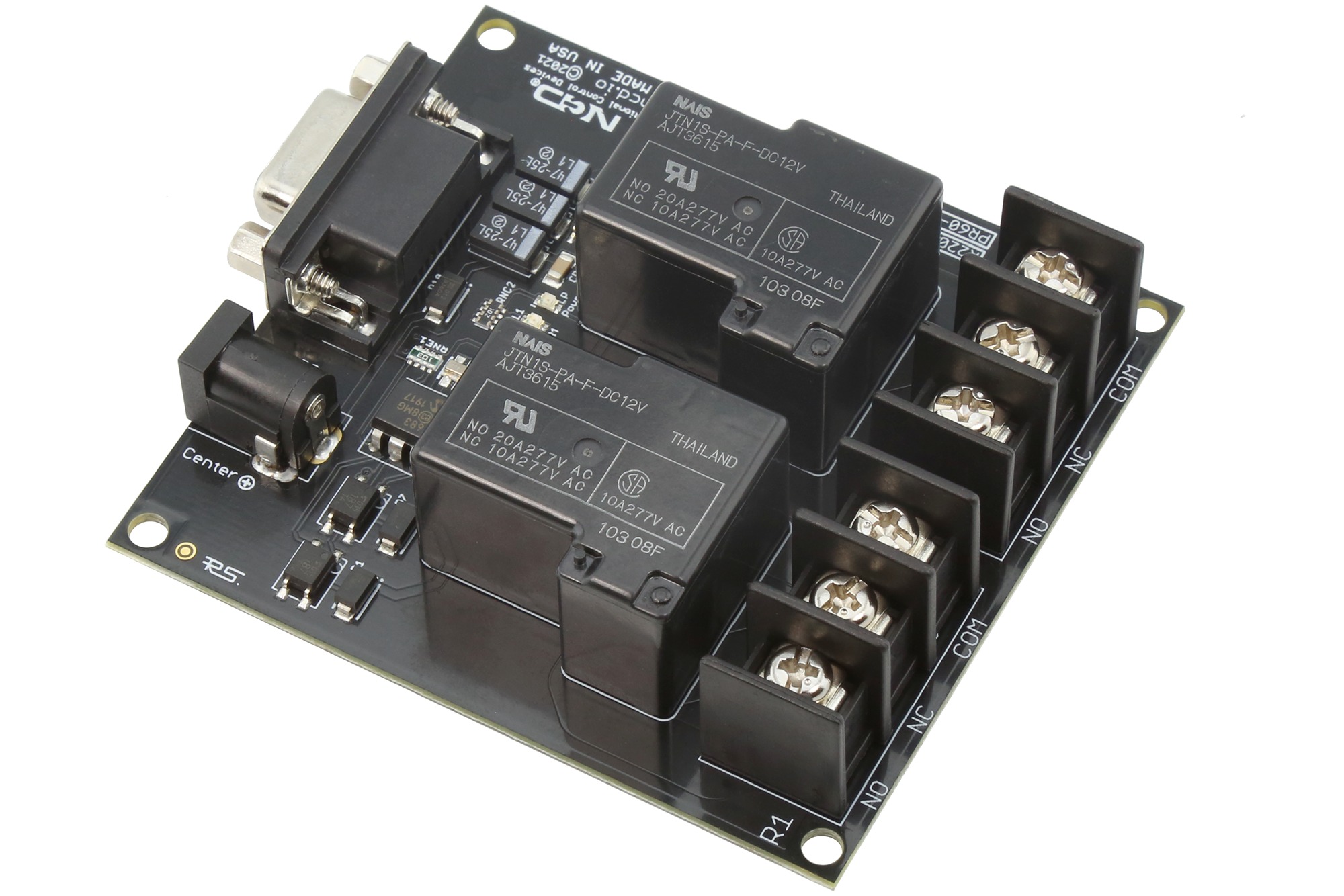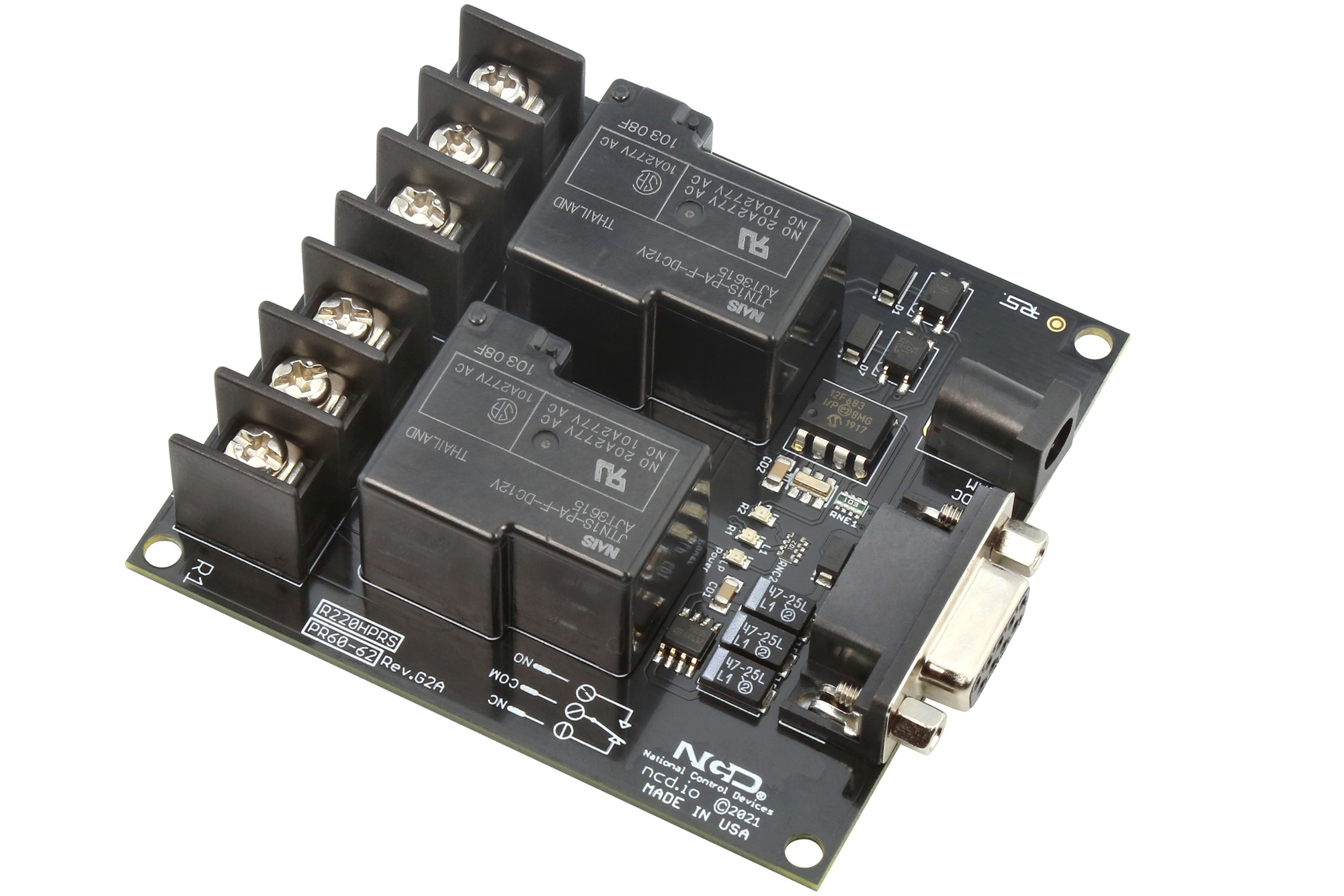RS-232 2-Channel High-Power Relay Controller with Serial Interface LOW COST
Dual Relay with Quick Connect Terminal Blocks
Control One or Both Relays with Two-Way Communication
On-Board Easy RS232 Connection
Highly Reliable Relay Board For Demanding Applications
RS-232 Serial Relay Controller
This simple RS-232 Relay board was designed to offer basic relay control functions using the RS-232 port of your computer. Supports Relay On and Off commands and reading the status of relays. Provide +12 Volts DC to the board, and send ASCII character codes to control the relays. Even a no-frills design deserves a high-quality driver stage, and that’s exactly what we put on our Serial Relay Controllers. Fast-reacting flyback diodes help shunt dangerous voltages away from the driver circuit.
Features include no-click startup and LED status lights. Relays can be controlled at 9600 baud and the board is compatible with ANY computer or microcontroller capable of delivering RS-232 data.
Connect this board to the USB port of your computer using a USB to Serial adapter. The USB to Serial Adapter is to be used with the Quick Start Kit and is available at checkout.
Associated Part Numbers
This product may have been previously manufactured using a part number shown below:
Relay Options

20-Amp SPDT Low Cost High Power Relay Option
This controller is available with a 20-Amp relay option, allowing control of high-power loads up to an absolute maximum of 240VAC at 20 Amps. Ideal for high-power switching applications, this relay should never be used for low-power signals. The 20-Amp relay is of the SPDT variety, which provides Common (C), Normally Open (NO), and Normally Closed (NC) connections. Common is connected to NC when the relay is off. Common disconnects from NC and connects to NO when the relay is activated. This relay is Rated at 20-Amps between NO and C. Do not exceed 10-Amps between C and NC connections. Review Datasheet
Mechanical Drawing
Wiring Diagrams
Essential
Tutorials
- Unable to Mount Virtual COM Port in Windows 10
- Controlling Inductive Devices: Managing Induction & Electromagnetic Interference
- Introduction to Computer Controlled Relays and Switching
- Relay Logic
Documentation Downloads
Download NCD Base Station
Introduction to Relay Control
This video will guide you in determining which relay controller you need for your application as well as a general overview of the differences between Relay Options. If you’re new to our products or just need a refresher for a new application this is a great place to start.
Induction Suppression
Learn about Induction and how it comes into play with Relay Controllers. Induction suppression can make your Relay Control applications intermittent and unreliable. This video will show you what causes it, how to avoid it, and how to account for it in your application.
RS-232 Serial Compatibility Notes
The NCD RS-232 Serial communications module is compatible with standard RS-232 signals (+/-10VDC), which are not directly compatible with UART signals from a microprocessor. If you are working with Arduino, Microchip PIC, or other common microcontroller, a communications module is not required. Microcontrollers will directly talk to the on-board processor of all NCD controllers.


